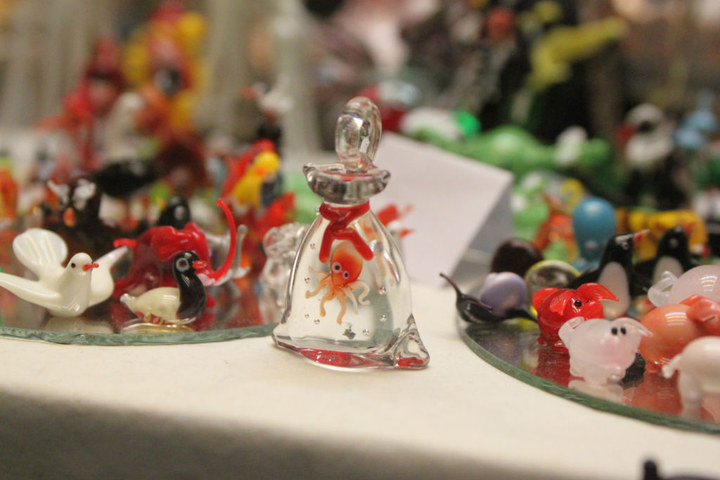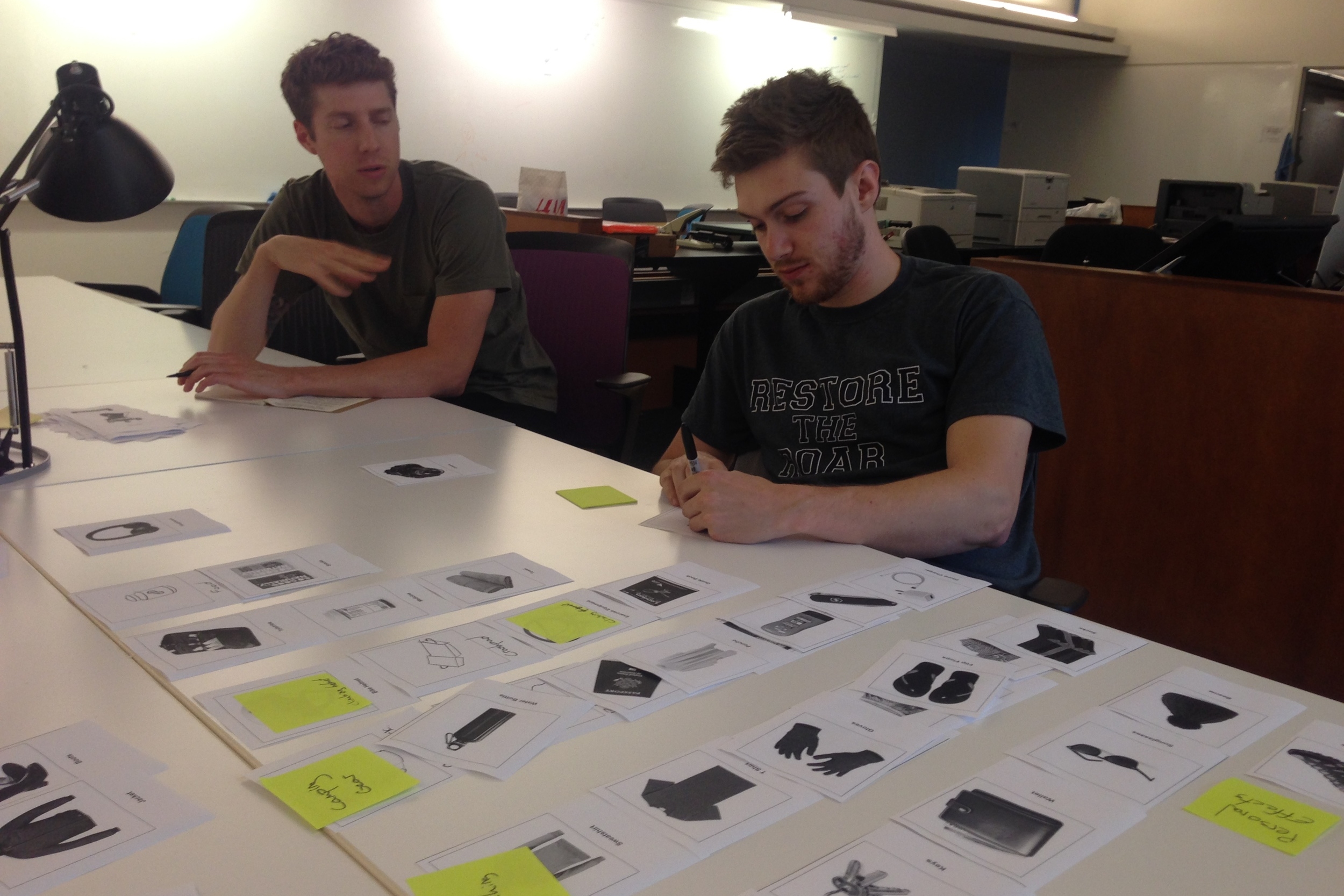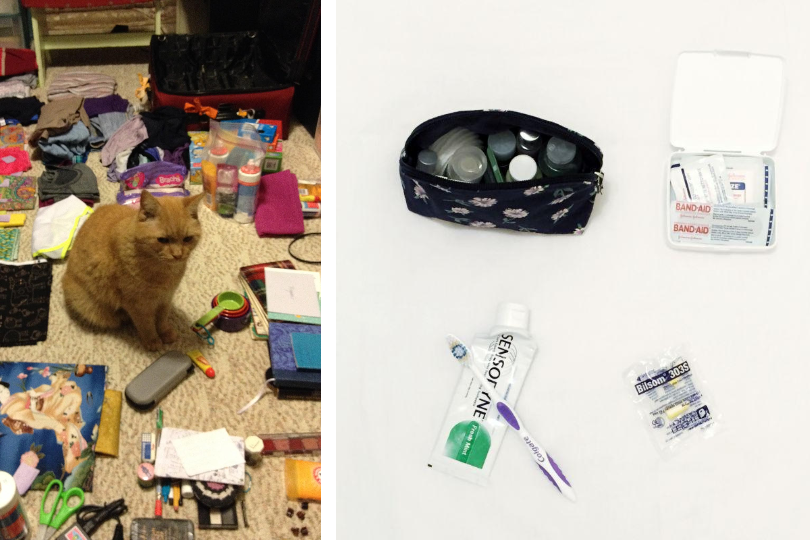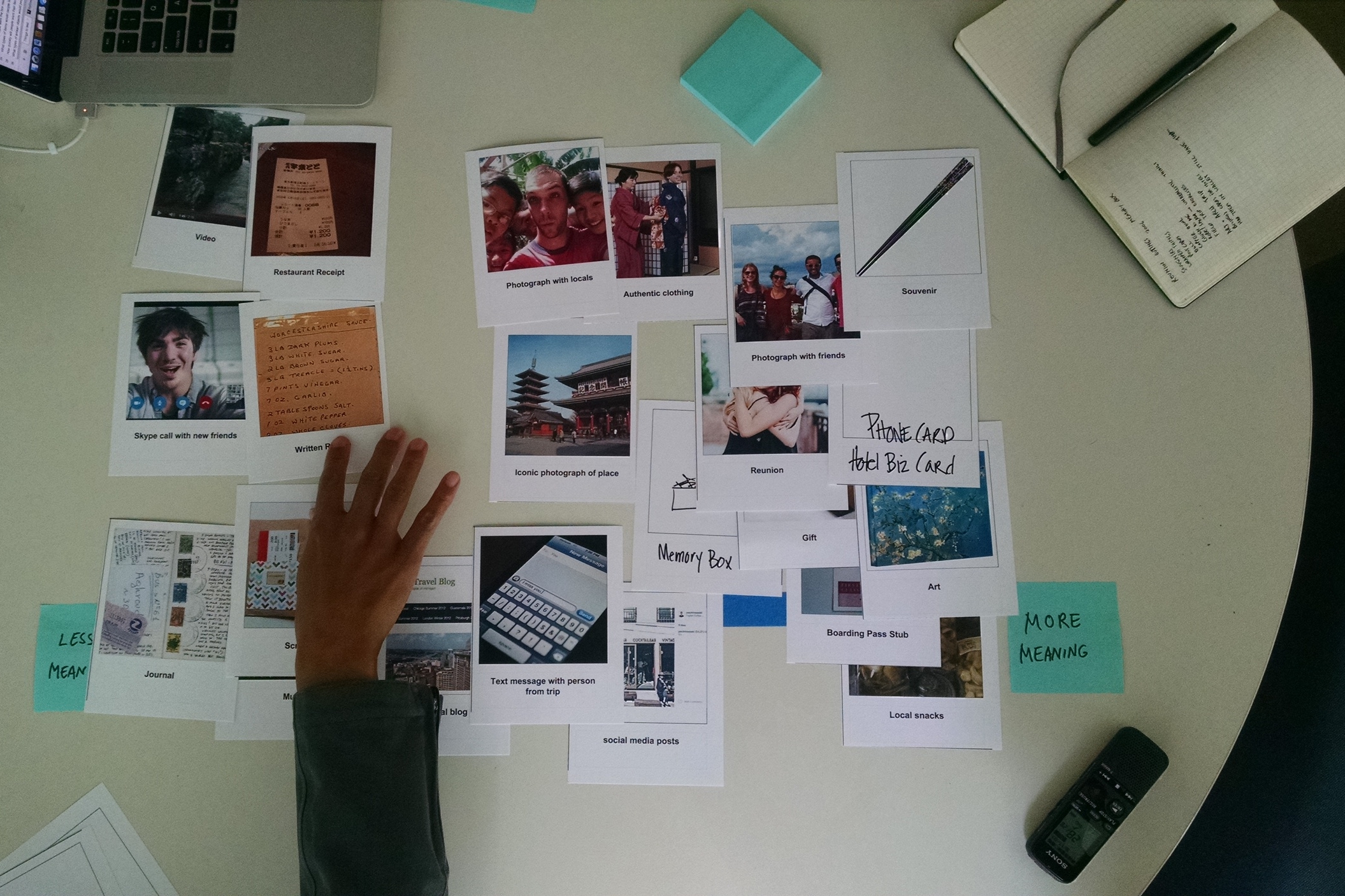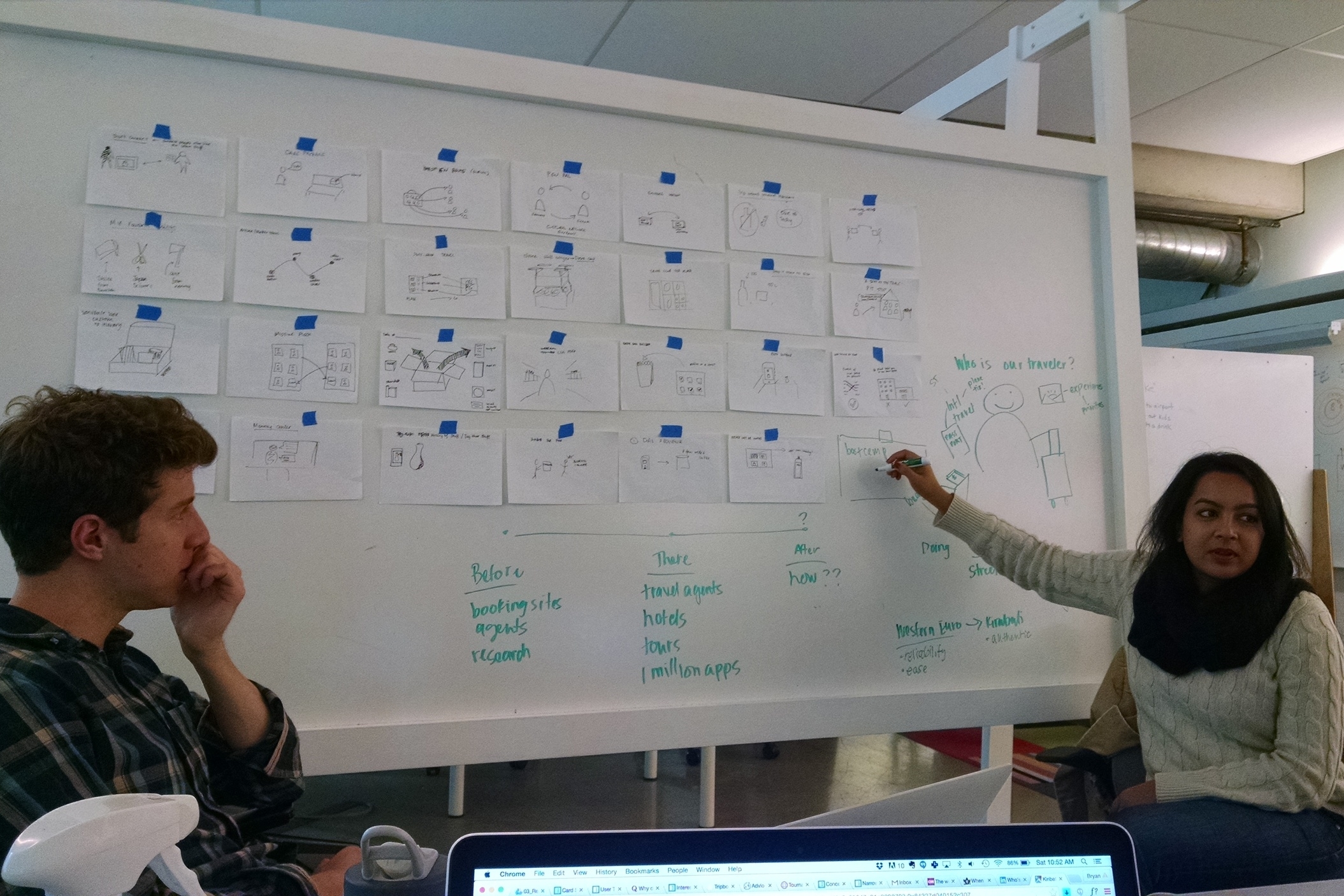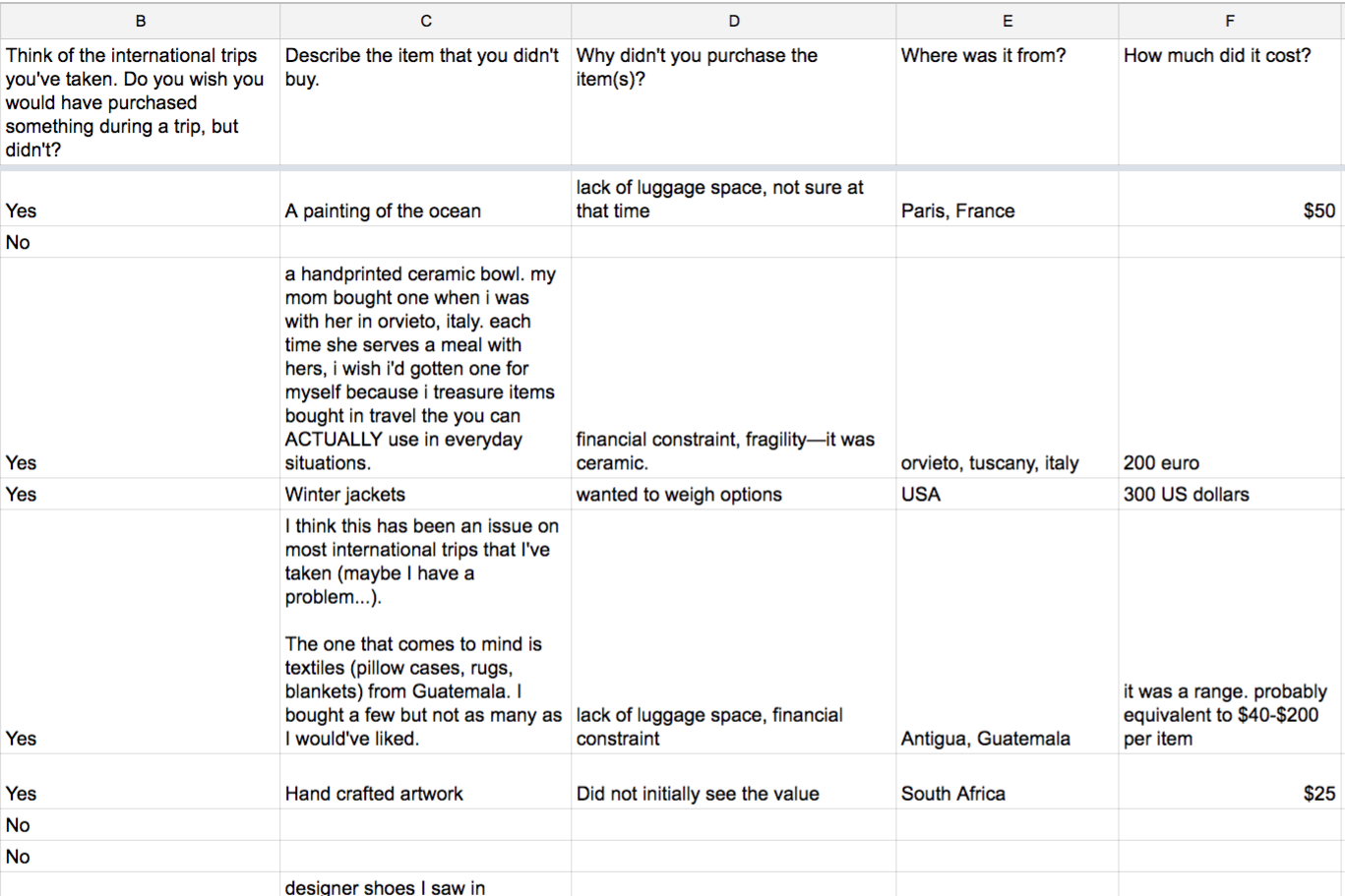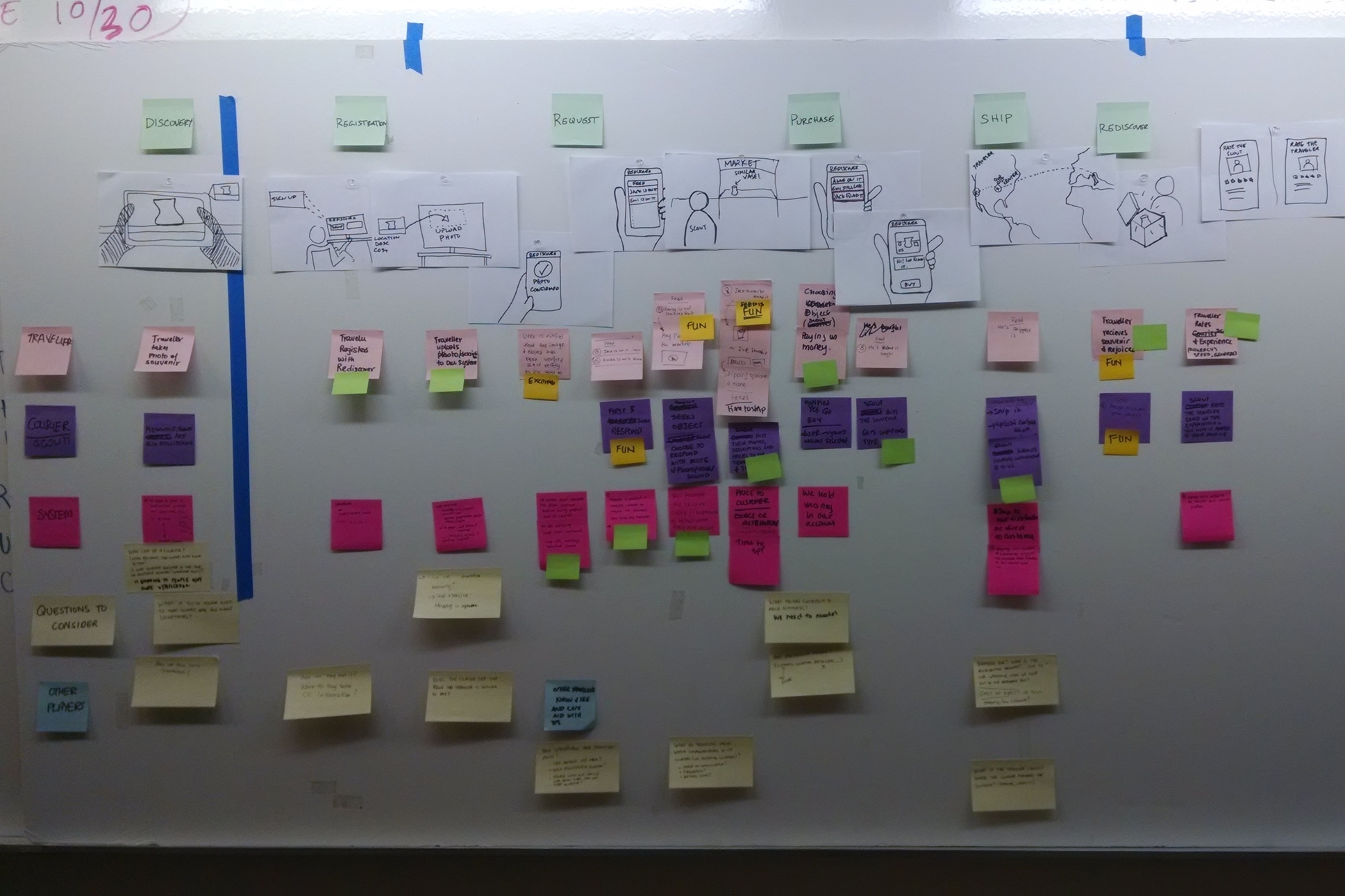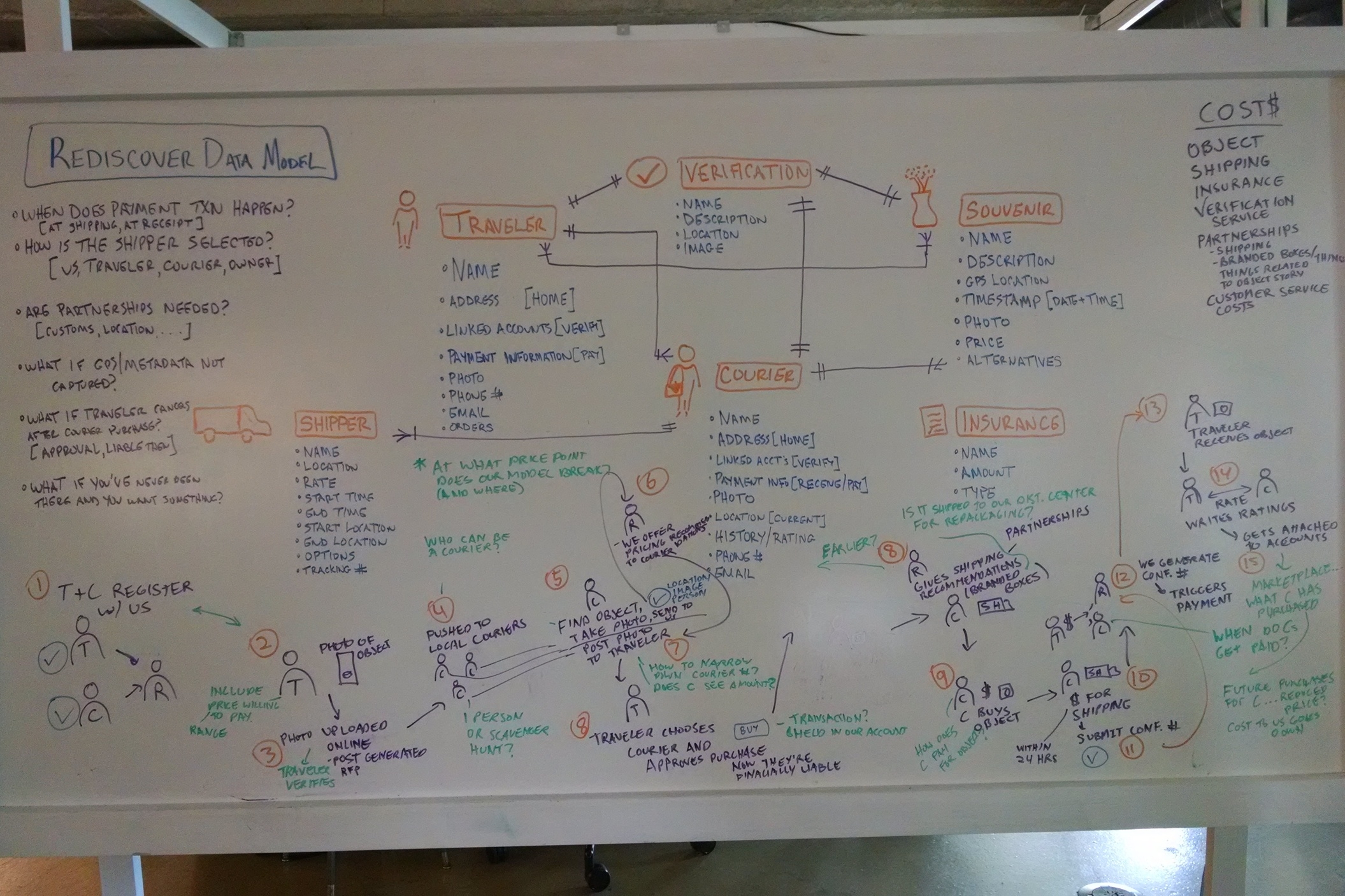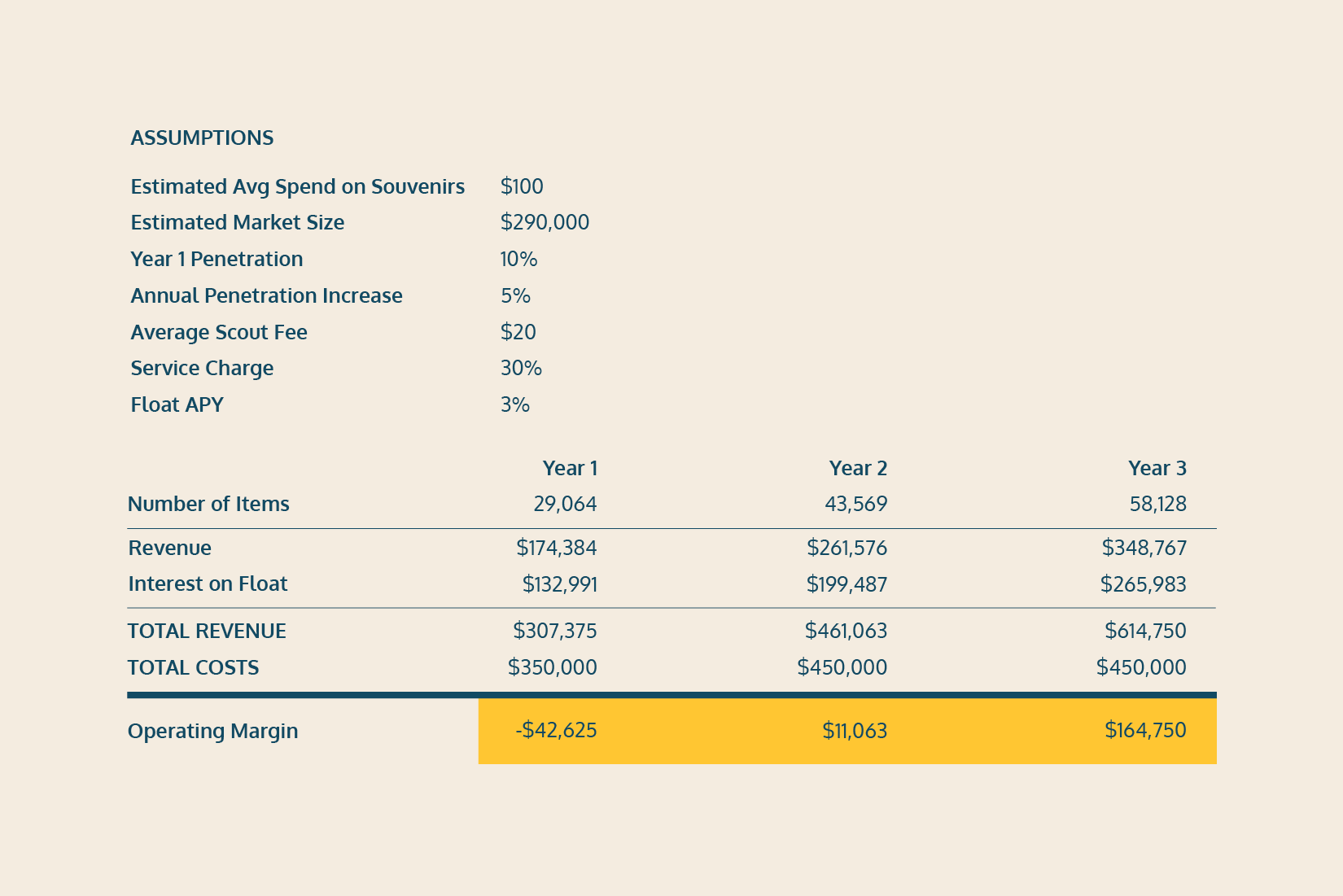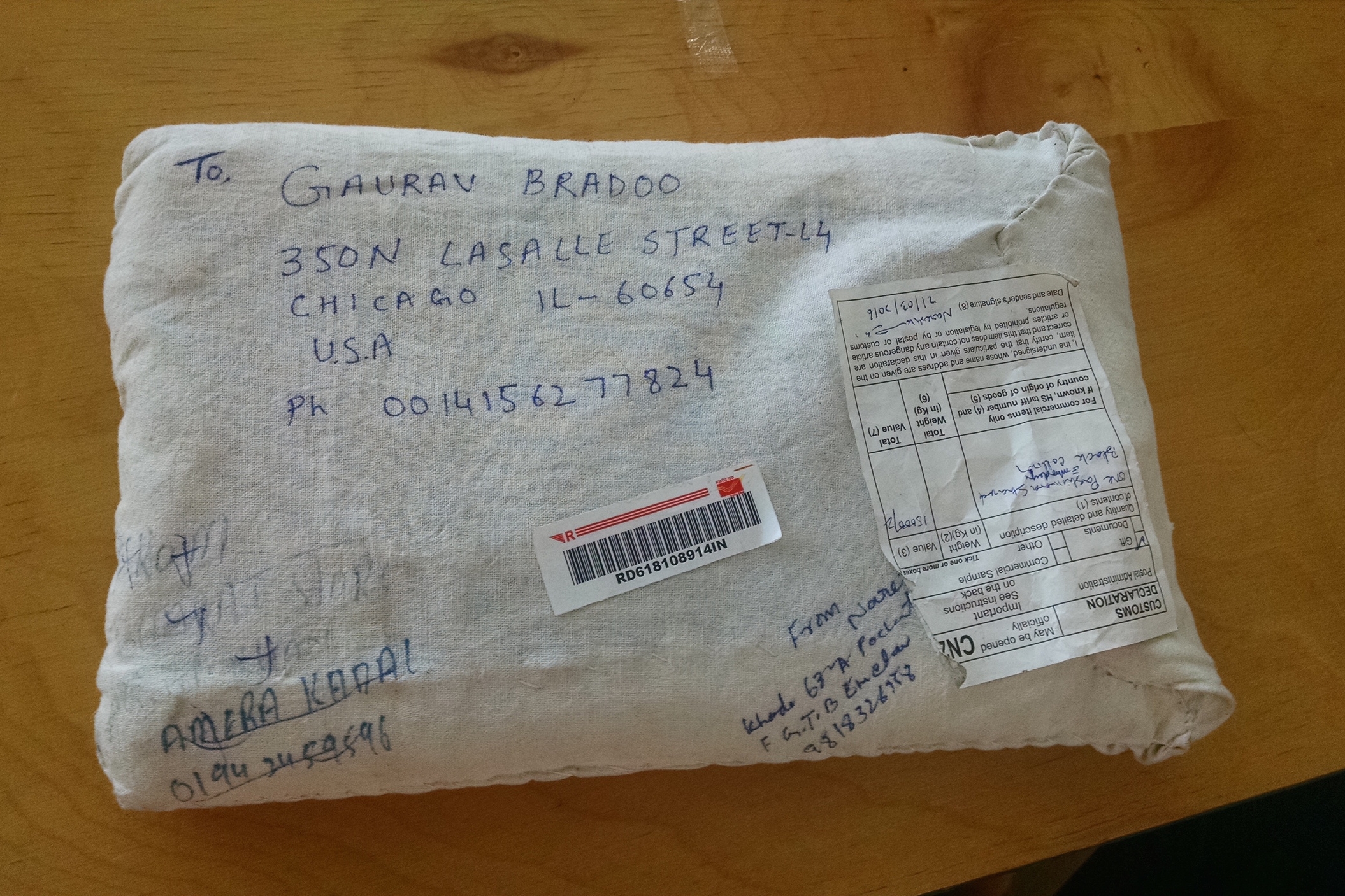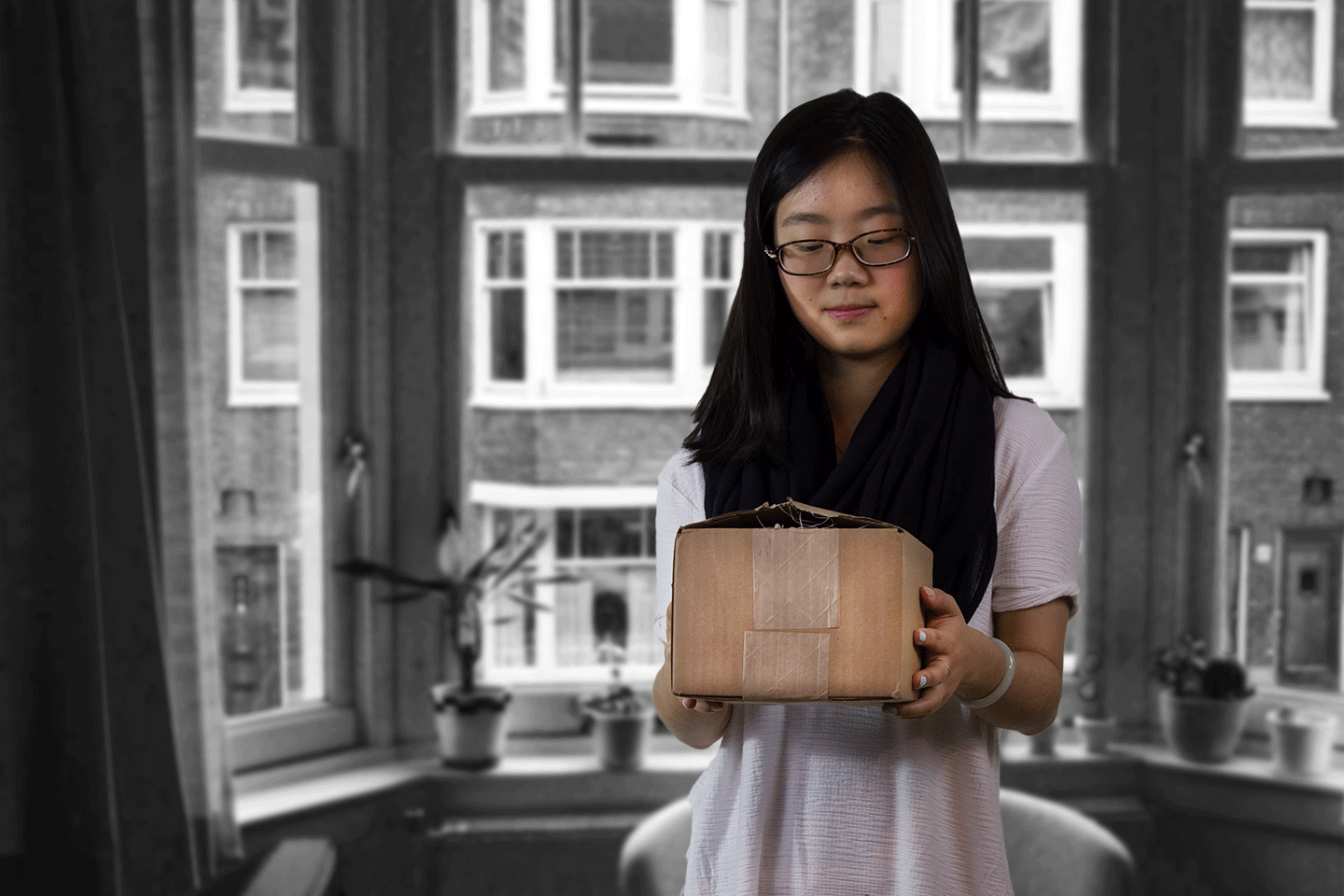Help travelers relive their trips
My contribution: Created appropriate research activities and protocols, generated concept ideas, made all storytelling photos, co-created service blueprint, presented concept at IxDA event
Team: Bryan Spence, Gaurav Bradoo, Mark Supert, Sipra Bihani
Type: Service Systems Workshop project
When: Fall 2015
Where: IIT Institute of Design, Chicago
What's the solution?
Unique items purchased while traveling carry meaning, but sometimes travelers choose to not buy something and later regret it. eyecatcher is a service that connects travelers to those things they wish they would’ve purchased but didn’t, so they can relive their trips. We connect those who seek specific items (seekers) with local experts (scouts) who help them buy those objects using their personal networks and local knowledge.
How it works
Seeker posts story & selects scout
Meet Lisa. She was talking about a trip she took to Venice with her boyfriend and something sparked a memory of this cool ceramic vase she saw at a tiny ceramics shop. She remembers walking through the narrow streets and looking through many shops. She noticed the vase in the shop window, but the shop was closed. She took a photo, but never returned to that shop and to this day, two years later, she still regrets not purchasing a vase in Venice.
Luckily, she has eyecatcher. Lisa posts her story with a photo of the vase to the eyecatcher platform. Then, she sets a reward price that she's willing to pay and looks through scouts who live in Venice. She ultimately selects a scout based on his expertise, rating, experience and reward bid.
Scout searches & shares journey
Meet Stefano, the scout Lisa selected. He knows his way around Venice. While he searches for Lisa’s vase, he shares photos and videos of the same streets Lisa remembers exploring, which takes her back to that memorable time and place.
Seeker confirms, pays & receives
Stefano sees a vase that looks similar to the one Lisa posted. He sends her a few photos of options. Lisa sees the vase that she wants from the photos Stefano posts. She confirms the price and pays and the reward is transferred to Stefano.
Later that week, Lisa receives the vase from Venice. She's so happy that she finally has the thing that brings her back to Venice and shares some photos with Stefano. Now she's wondering about those other things she wishes she would've brought back from other trips...
How did we get there?
Our theme for the class was “Travel” and our group’s focus area was “Stuff”, so we set out to understand what travelers did with their belongings during their trips. One common theme emerged about emotional connections travelers had with specific objects that they either brought back with them, or regretfully didn’t bring back.
We further explored this direction by having volunteers discuss why objects purchased on trips carried meaning. We also created a card sorting exercise to see which types of items travelers valued the most. Meanwhile, we used one participant’s story as inspiration to reconnect her with a little glass octopus she wished she would’ve bought in Venice.
Research findings that informed UX decisions
Objects from a specific place carry more meaning than those you can easily replace.
We conducted a photo study and interviewed travelers about items they packed on their trips. Several travelers shared stories about items they wished they would've brought with them but had to leave behind because of space restrictions or regulations.
This card sort on meaning instructed participants to place items on a scale from less to more meaningful. It led us to the conclusion that participants attributed more meaning to one-of-a-kind objects from specific locations over most other items.
It's not just about the object, rather the memories and meaning behind it.
Once we determined a possible service opportunity for unique items, we recruited participants to share stories and answer questions about items that they were able to bring back. This gave us an idea of the types of objects that were meaningful and why.
One participant told her story about a glass octopus she wished she would've bought in Venice. I experienced the frustration of attempting to find the same or similar object by contacting Venetian wholesalers and artists with no success.
Scouts should be incentivized to provide good service.
To validate our concept, we conducted a survey to gauge validity and feasibility. About half of the 45 participants had an item they wished they had bought, and most were willing to pay 10-20% above the price to get that item. More research with actual seekers and scouts should be conducted to see how much more seekers actually pay for an object, and to identify an acceptable payment range for scouts.
Takeaways
- Make your prototype experience as close as possible to your service. I lived the frustration of not locating an object, which strengthened the case for change.
- Ideas are easy, but implementation is key. We created a service blueprint to track what each person was doing during each part of the eyecatcher experience. We used this to decide that seekers should commit a reward before a scout searches, since a scout should be incentivized to conduct a good search. This also created a situation that allowed eyecatcher to make a small amount of interest by holding onto the fees before forwarding them to the scout once a search was completed.
- Use stimulus in research. I built an activity based on another activity I built for a class on research stimulus, which eventually led to our final concept direction.
- Fiercely debate your ideas with the understanding that it’s nothing personal. We had many long discussions that proved to be beneficial for creating a compelling service.
